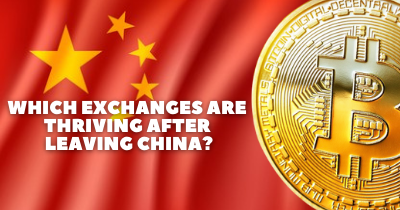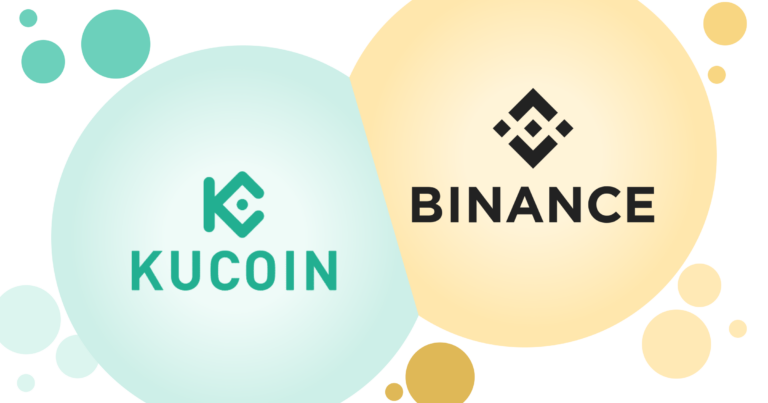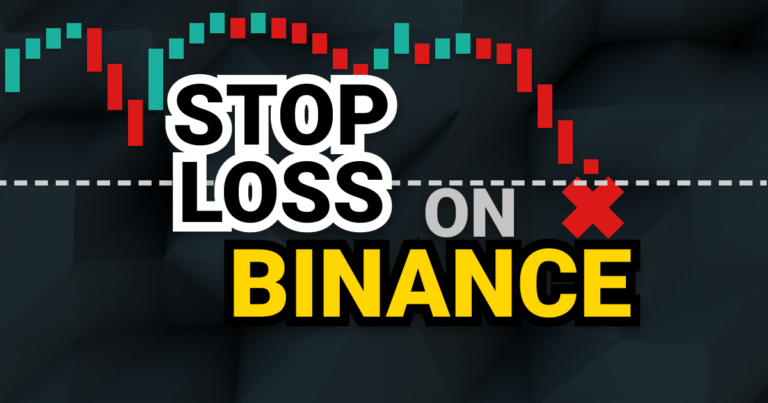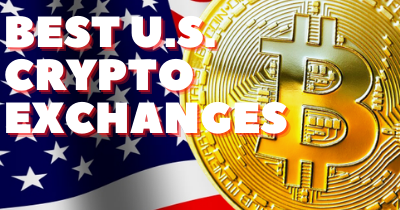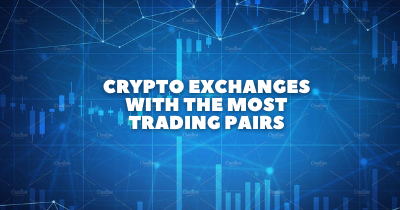Most Eco-Friendly Crypto Exchanges
In this article, rather than looking at low fees and high liquidity, we will discuss energy consumption, eco-friendly cryptocurrencies, carbon footprints, and environmental impact. Remember back at the beginning of 2021? Elon Musk caused a bit of a market crash by talking about how energy-intensive Bitcoin mining is and how it carries a huge global carbon footprint. He was right.
In the aftermath of Musk’s comments, many Bitcoin mining companies began embracing renewable energy and solar technology to become more energy-efficient and have a smaller carbon footprint. At the same time, cryptocurrency projects started looking at their own electricity consumption rates and doing more for carbon emissions transparency. As a result, when Bitcoin dipped, several green cryptocurrencies rose in value, including projects such as Nano, Stellar, Chia, and more.
Read on as we look at which crypto exchanges facilitate sustainability projects, which ones list eco-friendly cryptocurrency tokens on their exchange, and which platforms attempt to have a lower carbon footprint across their entire network. Here’s what sort of considerations we made for building this list:
Winners
Diving Deeper Into Our Winners
In each of these sections, we want to focus on one thing: each exchange must be successful enough for us to describe them as ‘eco-friendly crypto exchanges.’ For Gate.io, it’s obvious; they are giving an incredible platform to environmentally friendly digital currencies. No other crypto exchange in the world offers all of our favorite eco-friendly coins. Here’s a reminder of that list:
- Stellar (XLM)
- Cardano (ADA)
- Nano (NANO)
- Ripple (XRP)
- EOSIO (EOS)
- TRON (TRX)
- HOLO (HOT)
- CHIA (XCH)
- Algorand (ALGO)
On top of these major eco digital currency choices, Gate.io gives a big platform to the smaller cap projects, like Energy Web Token (EWT), which Binance has delisted, and Power Ledger (POWR), an Australian decentralized renewable energy trading platform.
Quick Look
- Gate is building GateChain, their own blockchain which can solve some of the massive energy problems in the blockchain industry through reduced processing power. This DeFi space will support projects using a proof of stake protocol and won’t use nearly as much energy per transaction. Read more
- One of the world’s most sustainable cryptocurrencies is Chia (XCH), which runs on an innovative ‘Proof of Space and Time’ model. Fortunately for Gate users, this platform offers the best liquidity for XCH outside of China, as well as two market pairings – XCH/USDT, and XCH/ETH
- While not fully carbon neutral, Energy Web Token (EWT) is one of the most eco-friendly cryptocurrencies and can be found listed on Gate.io
- Gate.io is the only exchange that lists all of the major eco-friendly coins:
- Stellar (XLM)
- Cardano (ADA)
- Nano (NANO)
- Ripple (XRP)
- EOSIO (EOS)
- TRON (TRX)
- HOLO (HOT)
- CHIA (XCH)
- Algorand (ALGO)

For those involved in the famous bull run of 2017, many of you will remember MIOTA (IOTA), one of the biggest price growers. It’s also a blockchain with low environmental impact thanks to its ‘Tangle’ technology.
In total, Gate.io lists over 700 cryptocurrencies and more than 1,300 market pairs, an incredibly diverse range of coins for any trader!
By comparison with Gate, Gemini’s list of Cardano, Ripple, Stellar, and EOSIO is almost disappointing, but thankfully it’s in another area of business where their environmental impact shines. Carbon offsetting.
If you’re new to the term ‘carbon offsetting,’ it is basically an acknowledgment that some businesses can’t really avoid their own emissions. So they pay for ‘carbon credits,’ which are government-issued documents enabling carbon emissions. The thing is, businesses don’t buy these credits from the government. Instead, they buy them from environmental schemes, ecosystem protection projects, community development outfits, or eco-technology companies. These groups earn carbon credits as proof of work towards a cleaner future and can then sell them to polluting businesses as an additional way to finance their activities! It’s a win-win.

So, when a business, such as Gemini, purchases carbon credits, it is called carbon offsetting. They will typically purchase them at a 1:1 ratio with their own carbon emissions to be carbon neutral. However, Gemini and their Gemini Green project have gone above and beyond by purchasing carbon credits at a 2:1 ratio for their Nifty Gateway project. Nifty is an NFT marketplace owned by Gemini.
Gemini purchased 350,000 carbon credits, equating to 350,000 tons of carbon, which is a lot! If you consider that 1 tonne equates to 6,000km driven in an average car, then you can appreciate how much Gemini is offsetting. It’s doubtful that their exchange and its data servers are contributing anywhere near that much in emissions. On top of the Nifty Gateway carbon-negative plan and the Gemini Green offsetting mission, Gemini has allocated $1 to the Gemini Opportunity Fund. This supports businesses, projects, and nonprofits focused on sustainability in the crypto industry.
Tyler Winklevoss, CEO, Gemini, is quoted as saying, “As bitcoin emerges as a dominant store of value, we must incorporate sustainability for future generations. We are proud to team up with Climate Vault to offset our exposure to non-renewable mining and contribute to the decarbonizing of bitcoin”.
Quick Look
- In June 2021, they launched Gemini Green, which purchased 350,000 metric tons of carbon credits as its first meaningful action, thanks to a partnership with Chicago’s Climate Vault. Gemini Green offers partners the chance to work with them to raise the bar for environmental stewardship across the whole industry
- One blockchain technology that has been criticised for the energy required to verify transactions is NFTs. These non-fungible tokens have made the news for many reasons, good and bad, the latest being that Gemini’s own NFT platform, Nifty Gateway, is to become carbon negative! Each month, they will tally up the energy use and double the offsets required, making them a net remover of carbon
- Gemini lists four of our favourite low-energy blockchains – Cardano (ADA), Ripple (XRP), Stellar (XLM) and EOSIO (EOS)
- Planning for the future: The Gemini Opportunity Fund has put $1m up for grabs to support businesses, projects, and nonprofits that are focused on sustainability in crypto. All you have to do to apply is email [email protected]
Unlike Gate, which has the best listings, and Gemini, which is the king of carbon offsetting, Binance is instead the big innovator, which offers the biggest financial backing and user base for making a change. Like many traditional financial institutions, which try to use their size and power for good to win favor, Binance has decided to use its massive resources for good. One way they have done that is by creating their own low-energy blockchain, going one step beyond just listing eco-friendly cryptocurrencies, and instead of creating tokens and supporting BSC developers directly.
Quick Look
- By building the Binance Smart Chain, Binance has already done a lot to tackle its own footprint, finding a way to validate transactions with a lower power consumption.
- The Proof of Stake method in which BSC works allows the farming process to give rewards without having to involve mining equipment
- Nano is a good example of a cryptocurrency that is so efficient and low energy that the entire blockchain can run on a single wind turbine. Fortunately for Binance users, it’s also the best platform to get hold of it, with the best liquidity among all cryptocurrency exchanges
- Binance is the biggest and most powerful exchange in the world, which also makes it the biggest alternative finance company and therefore the best placed to disrupt traditional finance. To do this, they have to be focused on innovation, which is why they put so much time and money into sustainable development, charity, compliance, Covid-19 recovery, and community-driven initiative projects. Read more from the CEO, Changpeng Zhao
- Binance Charity has raised $80m+ for causes regarding sustainability, education, hurricane relief, climate change, solar energy in Africa, and Covid recovery projects
- Helped to raise AUD$1m for tree planting projects in Australia after the 2020 bushfires. They did this by launching a new token called TREE on the BSC and pegging it to the AUD, allowing those who bought it to track its progress from donation to allocation
The Binance Smart Chain was a stroke of genius in truth, giving the Defi world an energy-efficient alternative to Ethereum. With the Ethereum network clogged, the BSC launched, and subsequent platforms like PancakeSwap popped up, leaving DeFi maximalists absolutely thrilled.
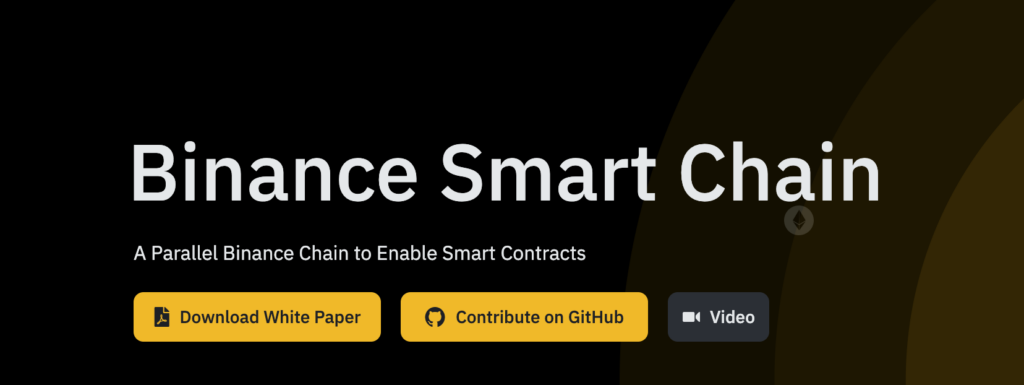
Beyond using its financial means, expert developers, and research capabilities to create an effective digital currency and blockchain, Binance uses its power to fundraise its own network. Here’s a great example:
TREE coin
In early 2020, just before Covid-19 gripped the world, Australia was fighting some of its worst-ever bushfires. To help with the replanting schemes, Binance launched the TREE token, which raised $1m Australian Dollars to help plant 100,000 trees. In addition, those who made donations were able to track the progress via the Binance Smart Chain. This means they can see the funds move and get notified when the trees they’ve contributed towards have been planted. Altogether this is an innovative approach towards philanthropy.
To see what other charitable projects Binance is fundraising for, such as solar energy in Africa, climate change, education, and Covid-19 recovery, visit their charity page.
Coin Clarity’s Sleeper Pick
KuCoin lists an excellent number of sustainable digital currencies, including Stellar (XLM), Cardano (ADA), Ripple (XRP), Nano (NANO), EOSIO (EOS), TRON (TRX), and Algorang (ALGO). On top of that, they also list some lesser-known projects such as Energy Web Token (EWT), Apollo Currency (APL), Axia Coin (AXC), and Volume Network Token (VOL).
Quick Look
- KuCoin lists Stellar (XLM), Cardano (ADA), Ripple (XRP), Nano (NANO), EOSIO (EOS), TRON (TRX), and Algorand (ALGO)
- Also offers market pairs for Energy Web Token (EWT), Apollo Currency (APL), Axia Coin (AXC), and Volume Network Token (VOL) each of which is a lesser-known low-energy blockchain
- In fact, KuCoin has a reputation for being the first to list exciting new coins and were ahead of the curve for many exciting projects, including the Stellar Network. Support for Stellar and the Stellar Development Foundation are key to unlocking minimal-energy smart contracts
- Rather than hiding or denying the problem, KuCoin is very transparent about the energy crisis in crypto and why the proof of work consensus protocol, such as that applied by Bitcoin and Ethereum, is power-hungry and even wasteful
- To promote proof of stake token projects, KuCoin built a soft taking service that is friendly to beginners, pays daily rewards, has no lock-up period, is highly secure, and is low energy
- The KuCoin Community Chain launched its mainnet in June 2021, along with it the KCC Ecological Plan, which aims to drive forward KuCoin as an ambitious and eco-friendly innovator in this industry. Scroll down to read more
- To signal their commitment to the future of the industry, KuCoin placed $50m in an investment fund to help find the blockchain of the future, one which will allow for the sustainable development of the whole industry
- Protecting the environment goes beyond energy consumption and being environmentally friendly, it also means looking at social problems and protecting people, which is why it’s great to see KuCoin partnering with charities in India to help provide daily supplies to those suffering from Covid-19
What we’d like to praise them for, however, is their KuCoin KCC Ecological Plan. In response to Elon Musk’s comments about digital assets and their high energy consumption due to mining, KuCoin got to work on creating an alternative to Bitcoin and Ethereum that would offer low-cost and low-energy transactions.
In just one sentence, KuCoin Global CEO, Johnny Lyu, captured our sentiments about why crypto is the future – “We believe that blockchain technology will accelerate the flow of value around the globe.” He says it is true, but it’s also a fact that we are using too much energy per transaction, which has to change. The KCC Ecological plan has many features, which you can read about here.
$50m to find the ‘Blockchain of the Future’
The last thing we want to share with you is the news that KuCoin Labs has put $50m into an investment fund to incentivize developers to find the blockchain of the future, something that can encourage sustainable development and change our relationship with data. Think you’ve got the next crypto gem? Read more.
Environmentally Friendly Exchanges
There’s very little information about what exchanges are doing to tackle their electricity consumption and environmental impact, making it very difficult for us to make this report. We hope to see greater efforts, transparency, and more attention paid to shareholder needs regarding ethical trading. More and more traders will demand carbon offsetting, sustainable development funds, and low-energy coins being listed in time. Why not start now?
